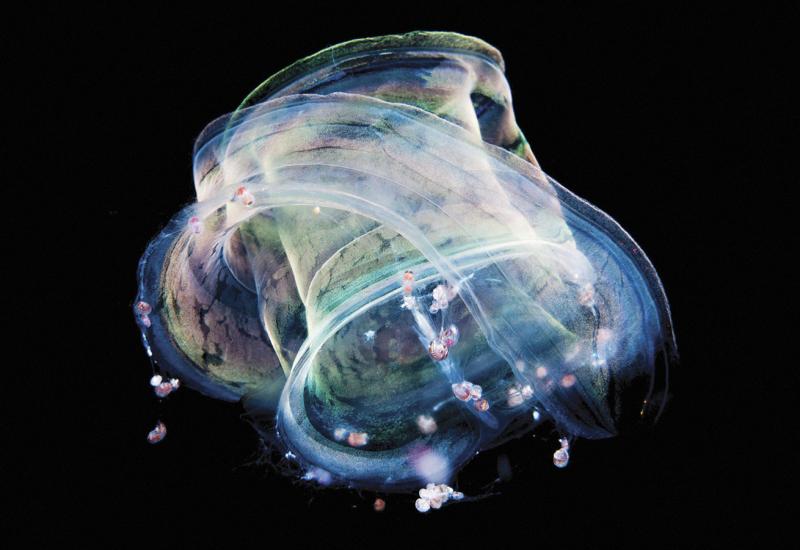Close Call | Lessons for Life

Steven P. HughesPeril arrives as divers hit the deck.
The water was cold, but the sun was warm. It was a perfect day for the dive Rhonda and Derek had planned. They were going to explore a shipwreck in 150 feet of fresh water. They had just reached their planned max depth when Rhonda realized something was wrong.
The Diver
Rhonda was a 45-year-old diver with more than 10 years of experience in open water. She was trained in technical diving and was knowledgeable about planning deep dives using multiple gas mixtures.
The Dive
The dive charter boat was taking a group of technical divers to a deep shipwreck in a freshwater lake. Both Rhonda and her dive buddy Derek had the appropriate training, and both planned to use two different breathing gases, including one that had a lower percentage of oxygen for the deeper part of the dive.
There were light seas, and the water was cold, but these were typical conditions for the area and the season. Rhonda and Derek entered the water and began their descent, reaching their planned dive depth a few minutes later. They switched to their bottom gas along the way. The boat had anchored onto a mooring ball, so they followed the descent line to the sunken ship’s bow.
Derek took the lead, and Rhonda followed behind him. After just five minutes at depth, Derek felt a tap on his back. When he turned around, Rhonda was floating behind him, unresponsive.
The Accident
Derek immediately brought Rhonda to the surface. During the ascent, Rhonda’s regulator fell from her mouth. Derek attempted to put it back in Rhonda’s mouth, but it wouldn’t stay in place.
As soon as they reached the surface the dive crew helped get Rhonda back on the boat and initiated the diver recall system to bring all of the divers back on board. Rhonda was still unresponsive on the boat, and the crew immediately began CPR. Rhonda briefly regained consciousness, vomited and lost consciousness again. However, she continued breathing on her own. At the dock, emergency medical services evacuated her to a local emergency department, where she received life-saving treatment.
Analysis
Doctors determined Rhonda had “crackles” in the lower lobe of her left lung, which are caused by air being forced through an airway or alveoli narrowed by fluid, pus or mucous. This was a primary indication that Rhonda had fluid in her lungs. An X-ray confirmed it. Neurological testing after Rhonda began recovery showed no abnormalities, which ruled out the possibility of an arterial gas embolism or decompression sickness. Evidence points to a likely case of immersion pulmonary edema, or IPE.
Pulmonary edema generally refers to the buildup of fluid in the lungs. IPE happens in otherwise healthy people in the water. There have been cases of IPE in swimmers, divers and snorkelers. Symptoms of IPE include shortness of breath, coughing up blood, and difficulty breathing. The injured diver may also feel extreme fatigue and dizziness.
Research into the causes of IPE is on-going, but uncontrolled high blood pressure is a suspected cause. When swimming or diving, the water pressure exerted on your arms and legs forces blood into the body’s core, increasing blood pressure in the heart and lungs. This additional pressure causes fluid to “leak” from the alveoli into the lungs.
There is currently no way to predict if a person is susceptible to IPE, aside from controlling risk factors for those conditions. IPE happens more frequently in cold water, with or without a drysuit, but there are documented cases in warm water as well.
Often, divers will ask if it is safe to dive on a certain medication. Very few medications have been tested with regard to the unique stresses and pressure changes of diving. It’s more important to ask if it safe to dive with whatever condition the medication is intended to address.
Do you have high blood pressure? Has it caused your heart to become enlarged and stiffened, making it less efficient at pumping blood? If you have been diagnosed with a condition that requires medication, consult a physician trained in diving medicine prior to diving.
If you are assisting a diver to the surface—as Derek did in this situation—do so safely. Make a normal ascent and complete any obligatory decompression stops along the way. Triggering a case of decompression sickness on top of the IPE would only make matters worse.
Once the injured diver is out of the water, keep them calm and relaxed while supporting their airway and providing emergency oxygen first-aid. The boat crew should also initiate their emergency plan. Any details of the accident you can provide to the medical staff can help them make the determination between immersion pulmonary edema and a lung over-expansion injury. When proper care is given quickly, symptoms can resolve in just a few days.
In this case, Rhonda was lucky to recover in the hospital and she returned to her normal life, although after the incident she has not returned to diving.
Lessons For Life
- Medical history. Consult a medical professional about any medical conditions you have, and make sure you are fit to dive.
- PADI Rescue Diver course. This training is beneficial for any diver who wants to understand how to care for other divers in an emergency and identify potential problems
- before they become emergencies.
- PADI Emergency Oxygen Provider course. Learn how to identify dive injuries and provide basic care to an injured diver once they are out of the water.










